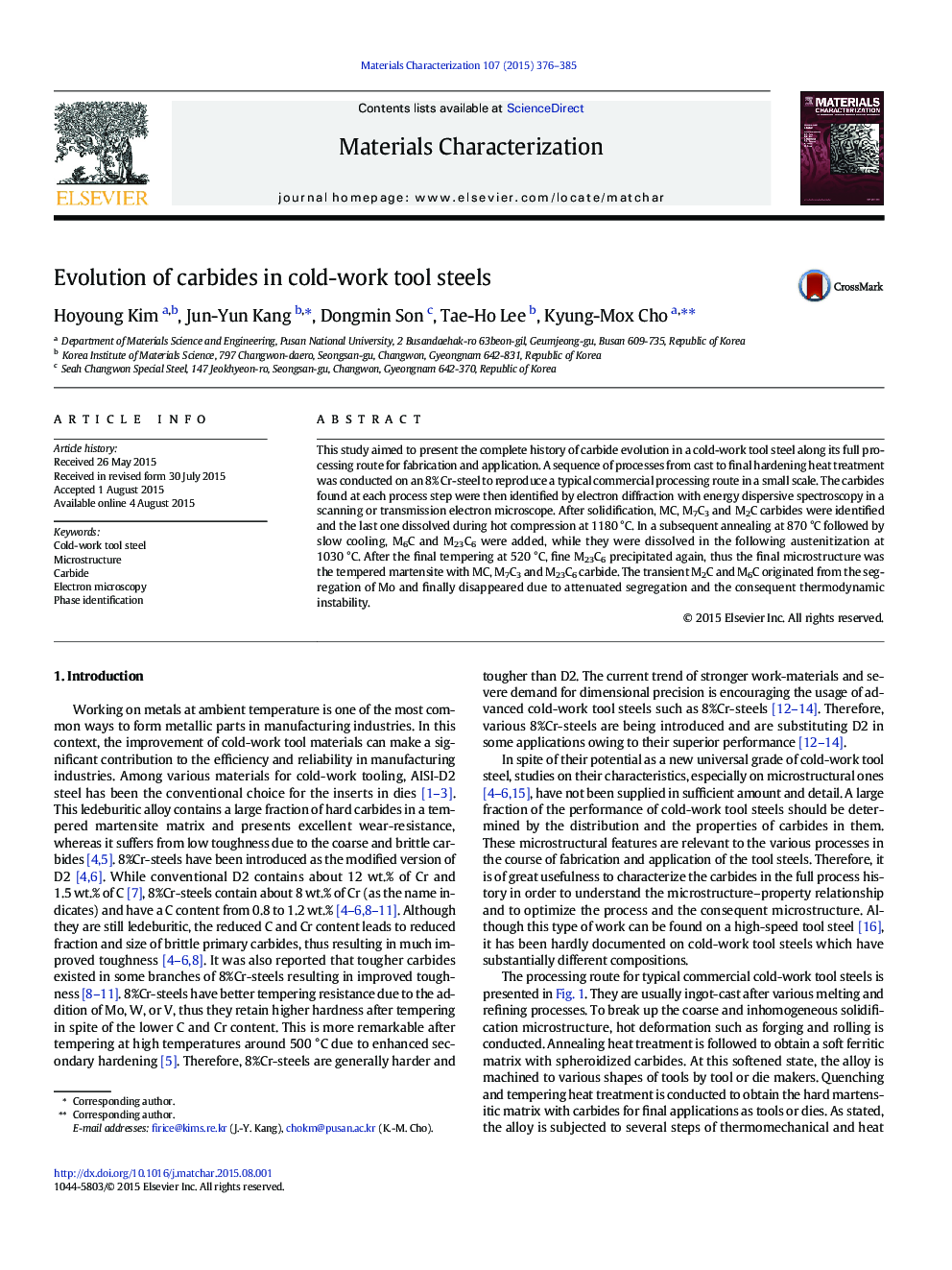| Article ID | Journal | Published Year | Pages | File Type |
|---|---|---|---|---|
| 7970285 | Materials Characterization | 2015 | 10 Pages |
Abstract
This study aimed to present the complete history of carbide evolution in a cold-work tool steel along its full processing route for fabrication and application. A sequence of processes from cast to final hardening heat treatment was conducted on an 8% Cr-steel to reproduce a typical commercial processing route in a small scale. The carbides found at each process step were then identified by electron diffraction with energy dispersive spectroscopy in a scanning or transmission electron microscope. After solidification, MC, M7C3 and M2C carbides were identified and the last one dissolved during hot compression at 1180 °C. In a subsequent annealing at 870 °C followed by slow cooling, M6C and M23C6 were added, while they were dissolved in the following austenitization at 1030 °C. After the final tempering at 520 °C, fine M23C6 precipitated again, thus the final microstructure was the tempered martensite with MC, M7C3 and M23C6 carbide. The transient M2C and M6C originated from the segregation of Mo and finally disappeared due to attenuated segregation and the consequent thermodynamic instability.
Related Topics
Physical Sciences and Engineering
Materials Science
Materials Science (General)
Authors
Hoyoung Kim, Jun-Yun Kang, Dongmin Son, Tae-Ho Lee, Kyung-Mox Cho,
